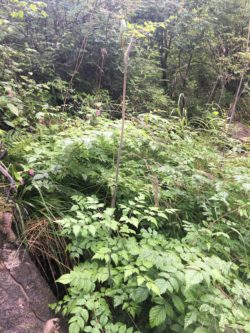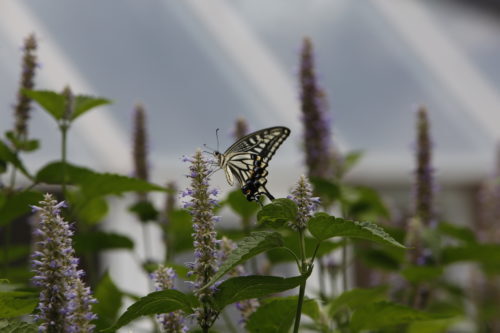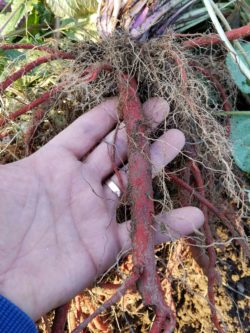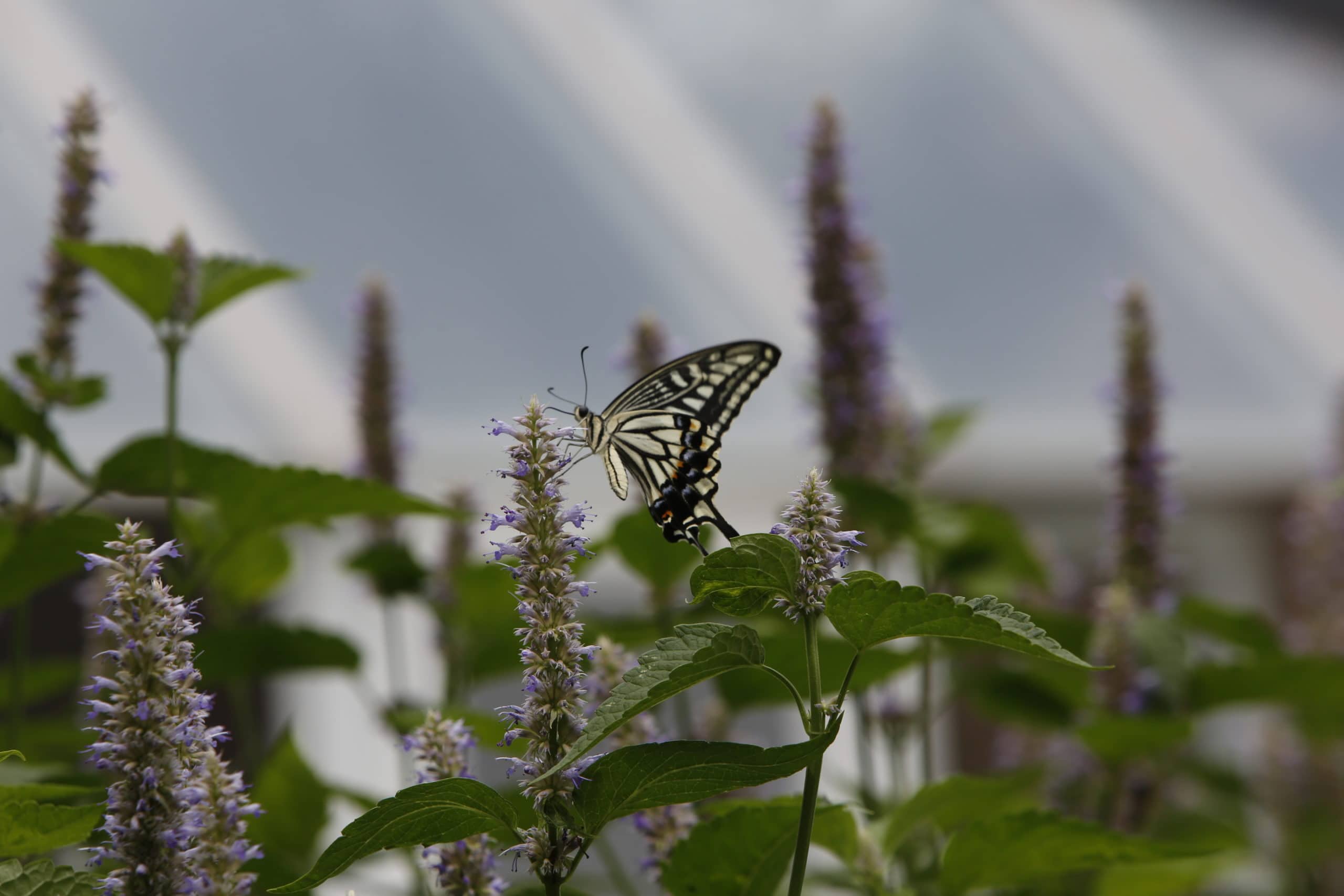Introduction

wild danggui (Angelica sinensis) Sichuan, China (2017)
Putting aside theory for a moment, the backbone of Chinese medicine is herbs – which are primarily produced in China. Most herbs came from the wild until the middle of the 20th century when, after recognizing the growing scarcity of wild resources, a government sponsored movement to domesticate herbs was started. Some herbs, such as danggui (Angelica sinensis), which until recently was thought extinct in the wild, and renshen (Panax ginseng), have long histories of cultivation, about 1000 and 1500 years respectively. Most herbs that are an important resource in the materia medica, yet are not native to China, have been cultivated. For example, muxiang (Aucklandia costus), originally from India, has been cultivated in China for about 200 years, and now cultivated almost exclusively in northwest Yunnan province. (Garran 2019). In fact, old texts call it “guang muxiang” to denote it was imported via Guangdong (Zhao, Guo, & Brand 2012). Another import, huoxiang (Pogostemon cablin), is native to the Philippines but is extensively grown in Guangdong province as well as Taiwan today. This huoxiang is technically called, “guang huoxiang” as opposed to “tu huoxiang,” which is the native Agastache rugosa. However, it is the former that is the primary medicinal used in formula such as Huoxiang Zheng Qi Tang. Even American ginseng, xiyangshen, is extensively cultivated in the northeast part of China.
As we can see from these examples, there has been a long exchange of herbs going into and coming out of China. Although most Chinese herbs were not cultivated on a large scale until relatively recently (the mid-20th century), some herbs from outside of China have been cultivated even longer. Chinese medicine has long accepted that plants from outside of China can be grown in China and, not only used by physicians across the country, but also assigned a daodi designation.
The term “daodi” is akin to the French wine term “terroir,” which is the interaction of various elements of a wine ecosystem such as the climate, microclimate, soils, grape varietals, and the winemaker’s skill. Daodi is the intersection of environment, genetics, and human interaction (Garran, 2019; Zhao, Guo, & Brand 2012). This concept is important because herbs from these areas were, and still are, considered to possess the best therapeutic qualities.
Returning to the question, “Can we grow Chinese herbs outside of China?” As noted above, Chinese medicine has already accepted that herbs from outside of China can be grown in China, given a daodi designation, and used clinically. For instance, muxiang, the plant native to India, has been established in China, and is considered “daodi” when grown in Yunnan province. This herb is referred to as “yun muxiang.” The take-away here is that the precedent has been set to allow for North American growers to grow plants native to China and establish our own daodi locations.

tu huoxiang (Agastache rugosa) in my garden in Beijing, China (2022)
This leads us to the question of whether or not we “should” grow Chinese herbs domestically. This question has been addressed in books such as Peggy Schaffer’s The Chinese Medicinal Herb Farm (2011) and my first attempt at a text like this Growing Chinese Herbs: Daodi Practices for Growing and Processing Chinese Herbs (2019). While these texts primarily focus on the “how” they both discuss a number of concerns including but not limited to pesticides and herbicides used in the production of Chinese herbs, potential presence of heavy metals, freshness, environmental impact, and, increasingly, cost. It becomes more clear every day that we should be growing Chinese herbs.
Problems and Solutions
If we accept that when an herb is labelled daodi it is the best therapeutic quality, then we are leaning on the three criteria that form the basis for a daodi herb; genetics, environment, and human interaction to guide us in this endeavor. What are these three pillars that buoy the concept of daodi?
- Genetics are a critical part of the tripod that holds up this construct. This is also a major issue with current growing attempts outside of China. Although there is seed available for at least 50 species of Chinese herbs, the genetics of these seeds is questionable. This problem can only be solved by proper selection of germplasm in China to be cultivated in another location. The seed must carry the daodi
- Environment, the second leg of the tripod, is one that can be, more or less, resolved when we know the environmental conditions of the daodi area for specific herbs. This information has, until recently, been locked up in the annals of Chinese literature; unavailable to those who do not read Chinese. The publication of Growing Chinese Herbs: Daodi Practices for Growing and Processing Chinese Herbs was the first text that made some of this information available to the English audience; but it is only a start.
- Human interaction includes farming practices, harvesting, and basic processing (generally done on the farm or close to it). Not dissimilar to the environmental conditions specific to daodi herbs, these human interactions have previously been unknown to Westerners. Instead, the last 25 years has been a process of trial and error that has yielded little results beyond very small-scale production. My text, for the first time in English, resolves this problem, but only for a limited number of herbs; there is still a lot of work to be done.

danshen (Salvia miltiorrhiza) our farm outside of Beijing, China (2016)
Conclusion
Chinese herbs are essential to the practice of Chinese medicine, they are the backbone of our medicine. With growing concerns over importing, cost, and quality, it behooves us to support growers and move toward development of this essential arm of our profession. Although there are some herbs that may be difficult to cultivate in North America, due to a lack of proper environmental conditions or availability of germplasm to start with, we must forge forward to gain the independence needed to create an ample and steady supply of these essential tools.
Thanks for dropping by to read this. Stay in touch.
Warmly,
Thomas
Edited by Rachael Witt
Citations:
Garran, Thomas Avery (2019). Growing Chinese Herbs: Daodi Practices for Growing and Processing Chinese Herbs. Passiflora Press.
Zhongzhen Zhao, Ping Guo, Eric Brand (2012). The formation of daodi medicinal materials. Journal of Ethnopharmacology 140: 476– 481.

